
The project has to do with the proposal of a new archaeological museum in the island of Delos. Delos is a rocky and small island situated in the Aegean Sea, Greece. It is one of the most important archaeological and historical sites in Mediterranean Sea. Today is an unihabited island and it is visited by many tourists. During a long period of time the island was under a violent procedure. The first houses were built on 3000 years B.C, they were rebuilt, burried; later on other houses built on the top of first houses and finally destroyed on 70 B.C and covered by soil gradually in the next 2000 years. In 1900 ruins started being revealed by archaeologists and new houses were built on the top of unrevealed ruins for their needs. Today only half of the existing ruins have been revealed. Visitors arrive in the pier and follow a route suggested by archaeologists that picks the most important ruins. At the moment the existing museum is a rather small and inadequate building for the needs of the place. Both existing museum and archaeologists houses sit on the top of uncovered ruins. Also there is something else; a lot of ruins are sat over other ruins.
The new proposal is using the context of the existing museum and splitted aroud the site with a series of pavillions which sit on the top of the archaeological site (revealed areas) in locations which are associated with the original place of artefacts. So, taking the tradition of layering, I am adding another layer on the top of the existing layer. By removing the existing museum and archaeologists houses we allow more excavations to be operated. A transcript of the movement around the site has been created in order to analyse, describe and finally locate the pavillions.
The proposal consists of eight pavillions. Six of them stand on the top of revealed ruins and the other two (the main building and arrival point) sit out of the archaeological site. All of them reflect underneath space. The pavillions over ruins pop up as a continuity of underneath ancient patterns and the rest two become part of the route. Those over ruins follow the idea of transparent floors and solid walls (the opposite of a normal building).
So as visitors step in the pavillions they stand over ruins and looking down the ancient ruins keeping a constant reference with the ruins and also locating the artefacts through the slot windows outside. So they gain the maximum information about the place they visit and artefacts as well.











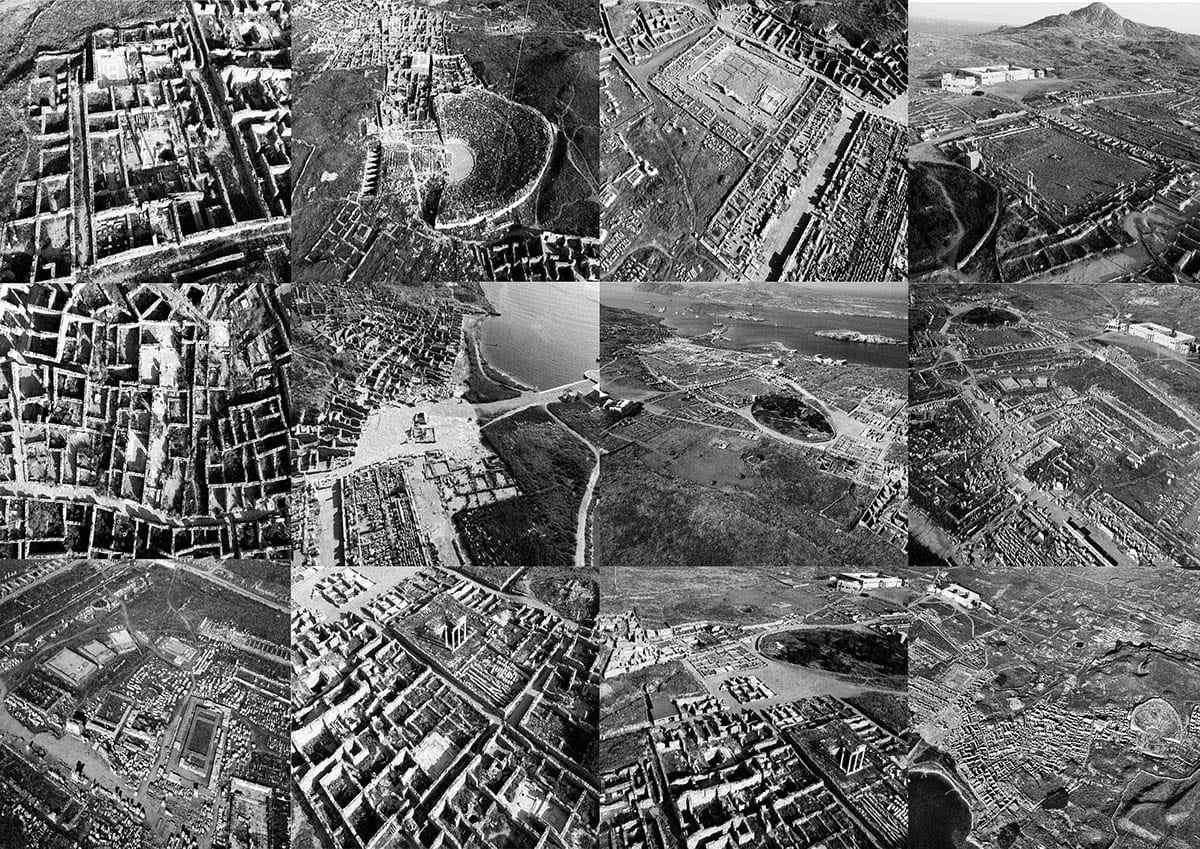

















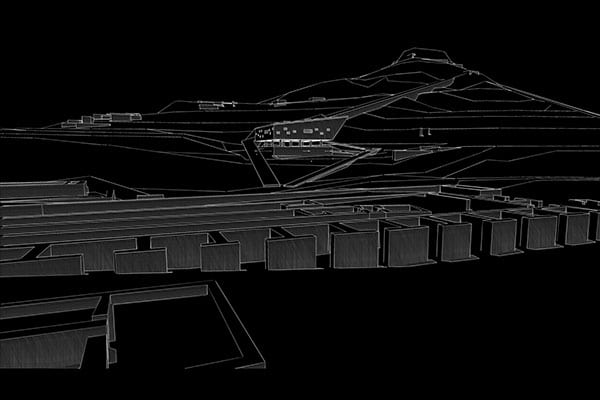






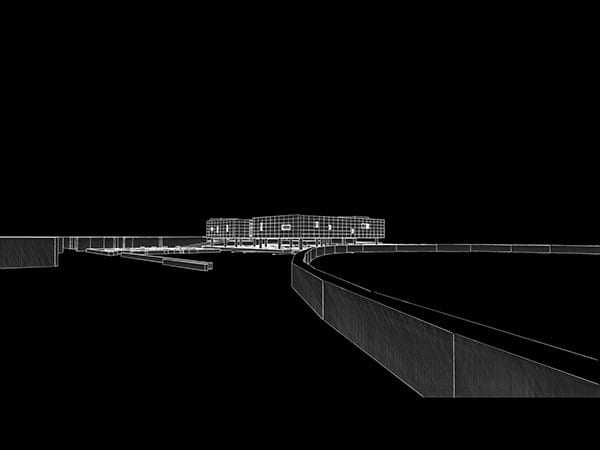








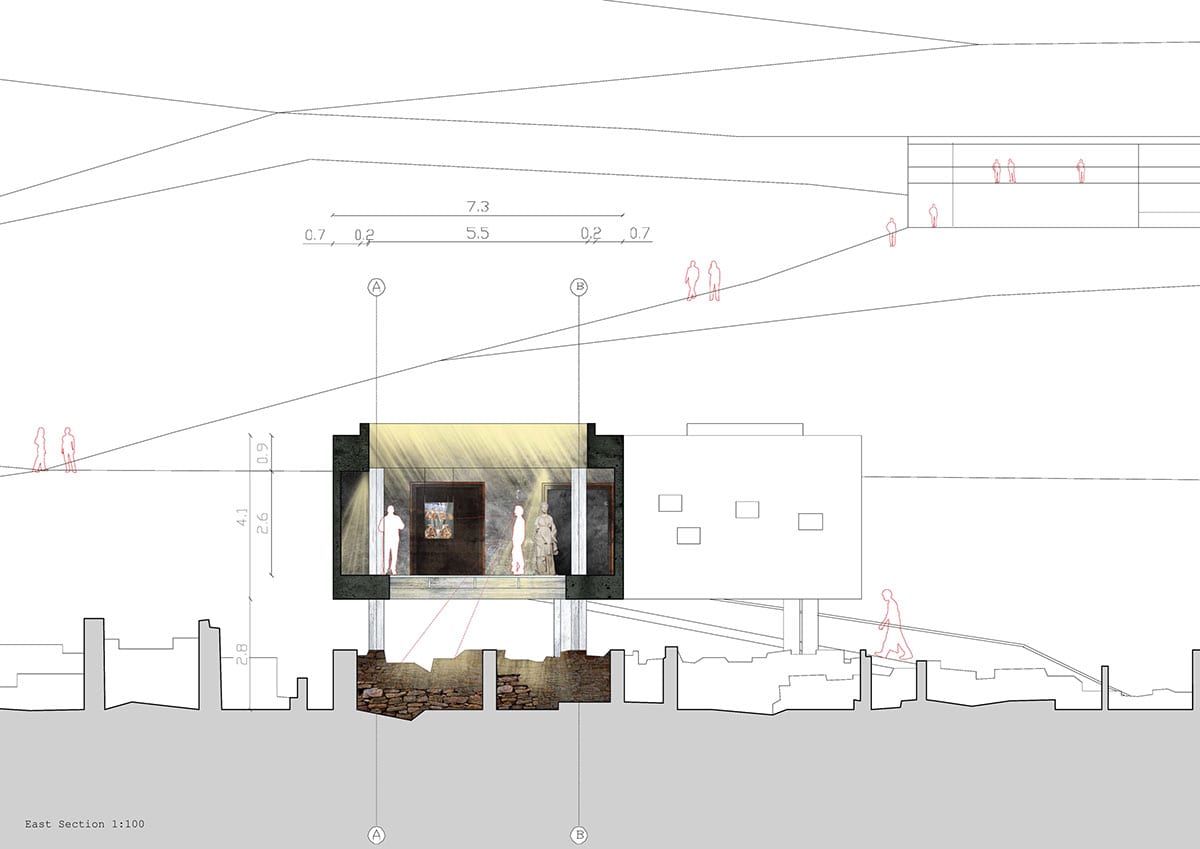







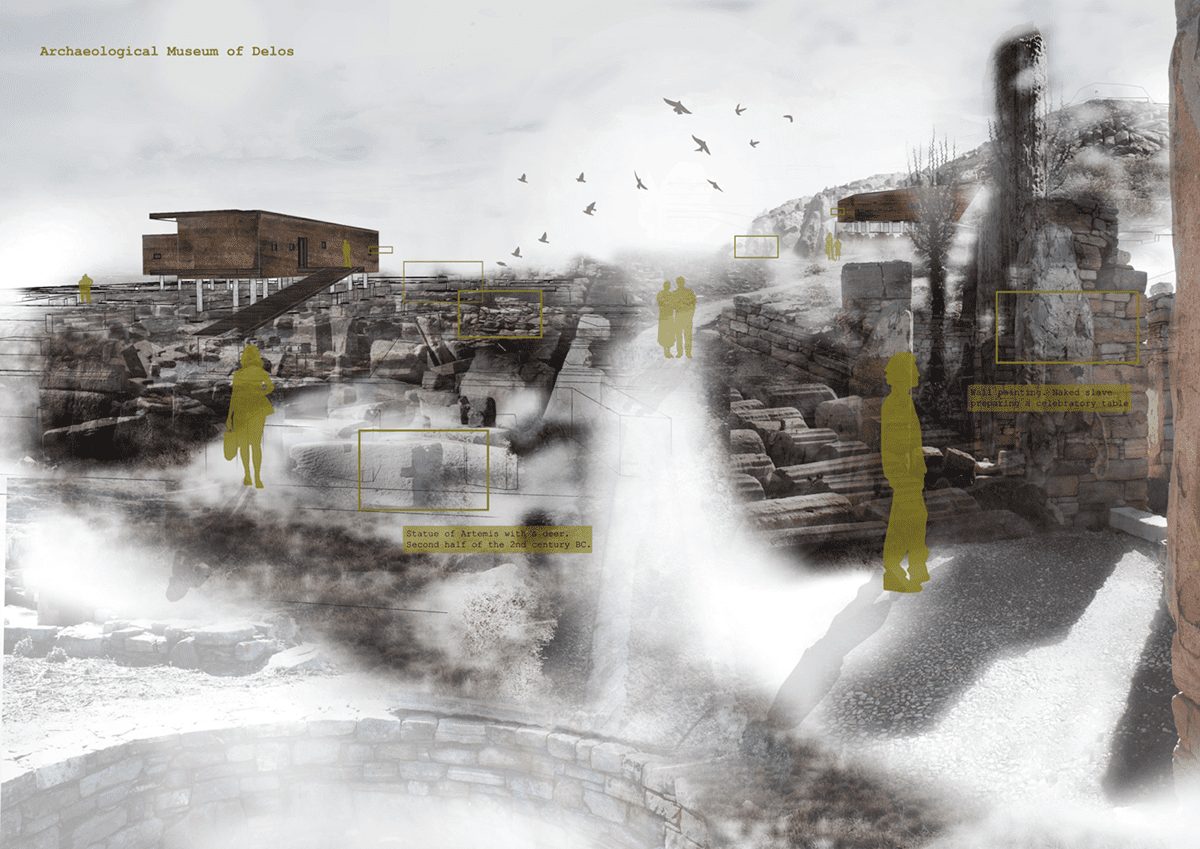


New Archaeological Museum of Delos by Georgios Teknakis is licensed under CC BY-ND 4.0



